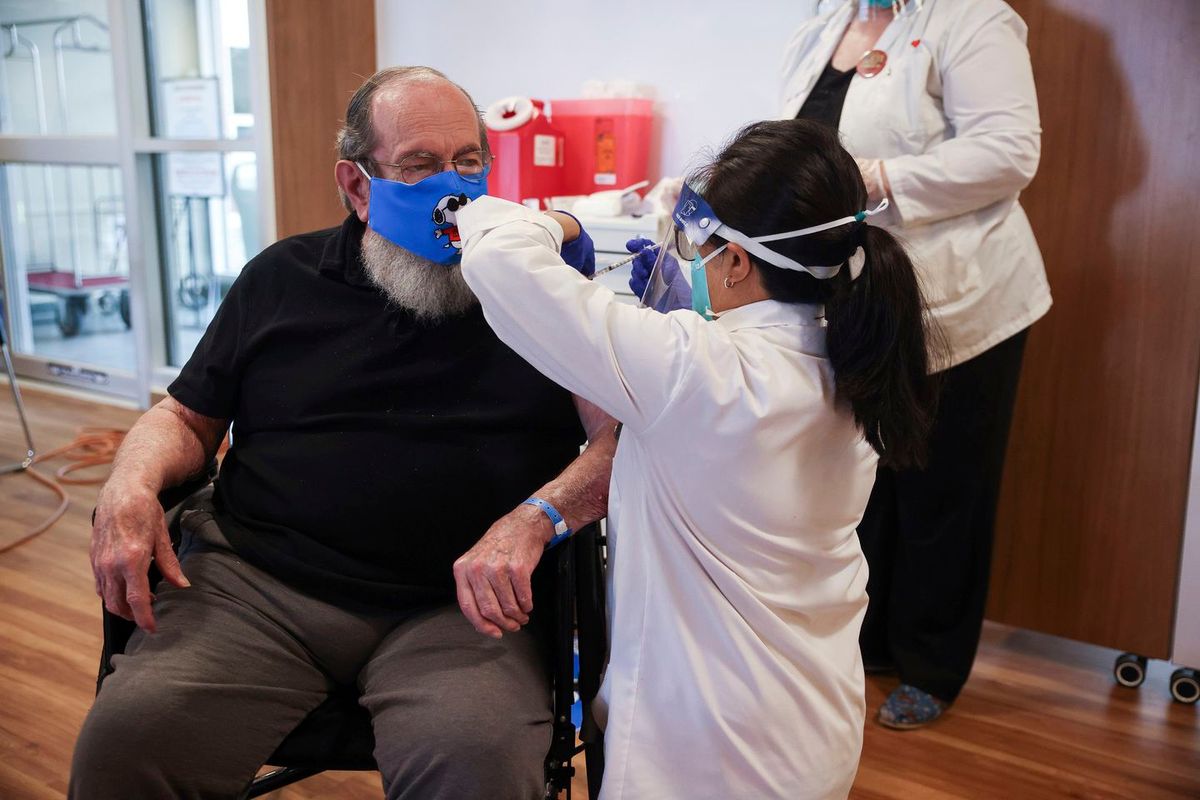What are the long-term effects of COVID-19?

A few minutes every morning is all you need.
Stay up to date on the world's Headlines and Human Stories. It's fun, it's factual, it's fluff-free.
Concerns over what has come to be known as “Long COVID” have only intensified as more and more people report lasting symptoms, including debilitating health issues.
In the United States, there have been over 20 million confirmed cases of COVID-19 and more than 350,000 deaths. That means the survival rate is over 98% (though some claim it’s greater than 99%), a fact that many have used to argue that the coronavirus restrictions are doing more harm than good.
With state economies struggling and mental health problems worsening, critics have repeatedly said the “cure” of closing businesses and restricting public gatherings, especially during the holidays, is worse than the disease.
The discussions of how deadly the coronavirus is, however, often bypass other concerns that both medical workers and political leaders have to consider. For example, if a country or state’s medical system is overwhelmed by patients, as has frequently occurred during the pandemic, the level of care drops, leading medical outcomes to worsen.
Another factor that has frequently been overlooked is the growing evidence that COVID-19 has sustained and serious long-term effects once the disease is no longer present in the body. Concerns over what has come to be known as “Long COVID” have only intensified as more and more people report lasting symptoms, including debilitating health issues.
The lasting damage of COVID-19
It has long been understood that COVID-19 poses a greater risk for older groups. According to the Centers for Disease Control and Prevention, a person who is 85 years of age or older is 13 times more likely to be hospitalized because of the disease than anyone from the age of 18 to 29. A patient 85 or older is also 630 times more likely to die.
Rates of hospitalization and death grow with each successive age group (and decline for children younger than 18), a fact that is often taken to mean that the disease poses little risk to young people. Statistically, this may be true, but a member of any age group is still susceptible to contracting the disease, though likely without any complications or symptoms.
A person may be asymptomatic, but medical researchers are still determining the long-term effects of COVID-19. The CDC, Mayo Clinic and World Health Organization have all reported that the disease can have lasting symptoms even after it leaves the body, a condition known as “Long COVID.”
The most frequently reported symptoms are fatigue, cough, loss of taste and smell, shortness of breath, joint pain and chest pain. These are all symptoms that commonly occur with COVID-19, which then persist even once the virus is no longer present.
Other long-term effects that have been reported include difficulty thinking and concentrating (“brain fog”), depression, headaches, fever, heart palpitations and various muscle pain. Rashes and hair loss are also believed to be caused by the virus.
Even more concerning, though, are rare but potentially deadly side effects: damage to the heart muscle, lungs, kidneys and brain. Blood clots, which can lead to death, have also been associated with COVID-19, both when a patient has the virus and after they are ostensibly cured.
There is preliminary evidence that COVID-19 may increase the risk of developing Parkinson’s disease and Alzheimer’s, though it may be years before a causal link can be definitively determined. Researchers are also still determining the severity of coronavirus-related side effects for people who had only mild cases of COVID-19, or no symptoms at all.
Some people with long-term effects have also reported struggling to return to work and normal daily activities like exercise. Problems with memory lapse and reduced stamina have also been documented, as has neuropathy, or pain and tingling in the extremities.
In England, a recent study found that 21% of patients still had coronavirus-related symptoms five weeks after being infected. Another 10% had symptoms 12 weeks after infection. It remains to be seen whether some conditions are permanent.
COVID-19 does affect the young
In November, the 33-year-old R&B singer Jeremih (birth name: Jeremy Phillip Felton) was hospitalized with a case of COVID-19. He was placed in the intensive care unit (ICU) and had to be intubated after his condition became critical. Jeremih, who has since recovered, says he suffered memory loss and developed multiple inflammatory syndrome, which affected his liver, kidneys and heart.
Jeremih discussed his experience on Sway’s Universe, an interview show in which he was joined by Chance the Rapper. He explained that his situation was still touch-and-go after his condition improved: “Once I was removed from ICU after that week and a half, I was going through recovery where I had to learn how to walk again, eat, all that stuff.”
Considering his age, Jeremih’s situation was rare, though certainly not unheard of. In September, Jamain Stephens Jr., a 20-year-old football player for California University of Pennsylvania, died of a blood clot in his heart after contracting the disease. These are outlier cases, though they do reflect how the disease is shown to have worse outcomes for African Americans.
The rarity of young deaths due to COVID-19 means, when it does happen, the event often makes headlines. That included 29-year-old Cassie Martinez in Southern California and Wanda Griffin, a 38-year-old woman who died on a flight from Las Vegas, Nevada to Dallas, Texas in July. Griffin was said to have an underlying condition (specifics were not given), but Martinez reportedly did not.
Comorbidities – preexisting medical conditions that are either known or unknown prior to death – generally determine a patient’s likelihood of having a severe or deadly outcome. This has been taken as evidence the virus is even less deadly than reported numbers, with skeptics claiming the reported number of deaths has been inflated.
However, scientists caution that excess deaths, or deaths exceeding expected numbers for a normal year, show that the increased number of people who have died in 2020 is considerably higher than reported deaths related to COVID-19.
This suggests, then, that the virus may be even more deadly than currently believed, including among younger people whose deaths may have been attributed to other causes.
Have a tip or story? Get in touch with our reporters at tips@themilsource.com




Comments ()